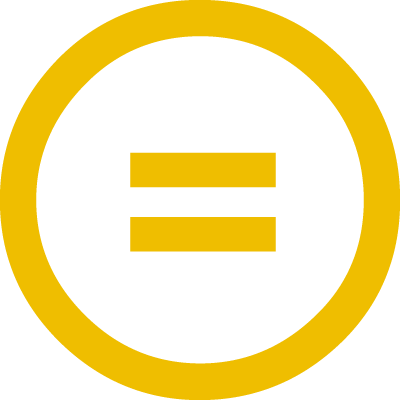Difference between revisions of "Licensing"
Susanna Ånäs (talk | contribs) (→Our collection) |
Susanna Ånäs (talk | contribs) (→Our collection) |
||
| Line 23: | Line 23: | ||
==Our collection== | ==Our collection== | ||
| − | {| | + | This hand-picked collection represents the types of media and licensing conditions that are available in Wikidocumentaries. In reality, each pageview is retrieved from other collections every time a page is read. |
| − | |- | + | {| style="font-weight:600" cellpadding="5" |
| − | | style="background:# | + | |- style:"padding:0.5em" |
| + | | style="background:#68a655;color:white" | Public Domain: PD, CC0 || style="background:#028aad;color:white" | BY || style="background:#a74e77;color:white" | SA || style="background:#ce492b;color:white" | NC || style="background:#ea8e42;color:white" | ND || style="background:#ffd76e" | Other: In copyright/not licensed, Copyright status not declared. * | ||
|} | |} | ||
| − | + | * *In reality these types are not available in Wikidocumentaries, but we will tackle them in the exercise | |
| − | |||
| − | * | ||
| − | * | ||
| − | |||
| − | |||
| − | |||
==Which licensing conditions can be used together in a remix?== | ==Which licensing conditions can be used together in a remix?== | ||
Revision as of 10:33, 25 July 2020
Welcome to view an exercise of the many possibilities of remixing content in Wikidocumentaries and how to license them!
What is this?
What is Wikidocumentaries?
Wikidocumentaries is a maker space for citizen historians. It collects data and content from openly licensed outlets around the world about any topic – people, places, buildings, events and more. The topics cover everything that Wikipedia does, and it is possible to add even more personal, local, or generally less recognized historical topics to Wikidocumentaries.
Wikidocumentaries is made not only for exploring but for reusing the materials that are found with it. It will be possible to annotate, correct data, locate and identify, or use the materials as part of further works. Wikidocumentaries will provide functions and tools for this work.
What is this page?
This is an overview of licensing issues related to existing and imagined reuse opportunities provided by the site. This page is created as an exercise in the Creative Commons Certificates program, but it will remain as an overview and reference for guiding our reuse practices.
If you have ideas or questions related to this exercise, please add them to the talk page. (Unfortunately joining the wiki is still a bit of a pain, but please give it a try! You can also mail wikidocumentaries@gmail.com or use any of the other comms methods mentioned in the menu at the bottom of the page.)
Finding out which works can be remixed together
In order to specify which works that can be used in each kind of reuse scenario, we must be clear on the basic concepts affecting copyright and licensing.
- What is our collection and what kind of licensing conditions do we have there?
- Which licensing conditions can be used together in a remix?
- When is reuse a remix and when not?
- Which conditions are required for each reuse scenario in In Wikidocumentaries?
Our collection
This hand-picked collection represents the types of media and licensing conditions that are available in Wikidocumentaries. In reality, each pageview is retrieved from other collections every time a page is read.
| Public Domain: PD, CC0 | BY | SA | NC | ND | Other: In copyright/not licensed, Copyright status not declared. * |
- *In reality these types are not available in Wikidocumentaries, but we will tackle them in the exercise
Which licensing conditions can be used together in a remix?
When is reuse a remix and when not?
Derivative work/adaptation/remix
A derivative work – it can also be called an adaptation or a remix – is created when one or more works are altered in a way that creates a new copyrightable work.
Derivative works are created for example when works are translated, or adapted from one medium to the other, like creating a film out of a book.
In order for the resulting work to be protected by copyright, a level of originality must be presented, and the level varies by jurisdiction.
Alterations that produce an adaptation
- Cropping
- Color correcting
- Translating
- Adapting for another medium
- Syncing a musical work with a moving image is an adaptation regardless of what applicable copyright law may otherwise provide.
- The data about the media, the metadata, cannot be transformed either unless the license of the image allows. Many aggregators now require that the metadata of their partnering institutions must be in CC0 to allow the aggregators to clean, format and enrich the metadata without additional permissions.
- The Creative Commons 4.0 license condition ND (NoDerivatives) prohibits sharing derivatives of a work. It is still possible to create them, as long as they are not shared.
- CC0 license for the metadata makes it easier to combine media metadata.
Not an adaptation
The reuse is not considered an adaptation if the new work is not based on or derived from the original work.
- Technical format-shifting (for example, converting a licensed work from a digital format to a physical copy)
- Fixing minor problems with spelling or punctuation
- Reproducing and putting works together into a collection/compilation
- Including an image in connection with text, as in a blog post, a powerpoint, or an article
Part of a collection/compilation
In Wikidocumentaries we are interacting with several layers or collections. Images are released by museums, archives and libraries from their collections. They traverse through the collections of the aggregators and become part of different compilations on the Wikidocumentaries website.
None of these transitions changes the images or their copyright status. Wikidocumentaries displays the images along with the attribution to the original creators. Out of courtesy, Wikidocumentaries also displays the originating institution and the aggregator.
- It is not required to apply Creative Commons ShareAlike license to the resulting collection if SA-licensed works are used in it.
- It is possible to use Creative Commons ND-licensed works in the resulting work and combine it with other works.
Reading media to Wikidocumentaries
Wikidocumentaries displays materials from several outlets. These outlets are content aggregators that gather and display material from other organisations. All the source images have their individual copyright status and licenses. Currently Wikidocumentaries only reads media that is compatible with Wikimedia Commons (CC BY-SA or more open). With more detailed control we could display more content but limit reuse of the content if the licenses do not allow that.
Media is currently read from the following services
- Finna, the Finnish content aggregator for museums, archives, and libraries. Includes PD, CC-licensed media, and copyrighted media. Media is hosted at the source organizations.
- Wikimedia Commons: Images, maps. Includes PD and CC-licensed media media.
- Creative Commons Search: Images. Includes PD and CC-licensed media media.
- Europeana: Images. Includes PD, CC-licensed media, and copyrighted media. Media is hosted at the source organisations.
- Flickr: Images. Includes PD, CC-licensed media, and copyrighted media.
More content in the future
Storing and reading user-contributed images
The core of Wikidocumentaries is to facilitate weaving personal, less-recognized or local materials into the big data fabric. In order to do so, we need to solve in which services to direct the users to store their materials and how to make them recognizable for reading into Wikidocumentaries. Such services include local history projects such as the Topotheques, or a global service such as Internet Archive, or commercial services like Google Photos. All of them require the materials to be CC licensed in order to make them available for remix at Wikidocumentaries.
Reading more material types
There are many exciting media sources available for reuse, such as newspaper archives, sound libraries, video and film archives, bibliographic resources, full-text literary works, historical maps, data repositories with or without linked data to name a few. Any of them can be used to discovering ever more material and to provide more chances for remixing the works.
Reuse scenarios in Wikidocumentaries
Displaying and distributing
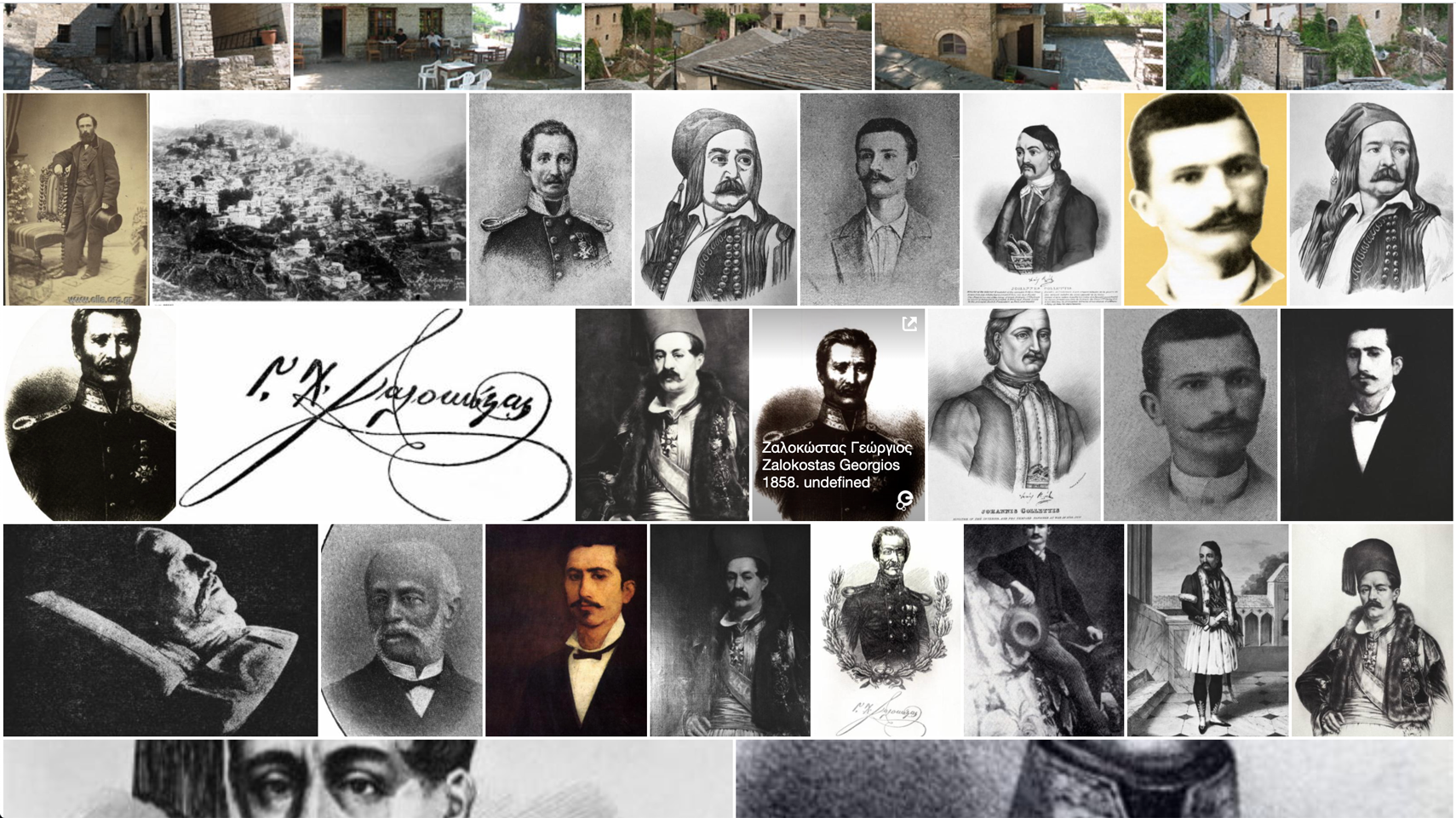 |
Displaying aggregated images of the topic
Images are searched from several open repositories based data that is known about the topic. The images are displayed in a grid on the topic page with metadata provided by the source service. The original images are not altered – it would be possible to display images licensed with ND and NC licenses.
|
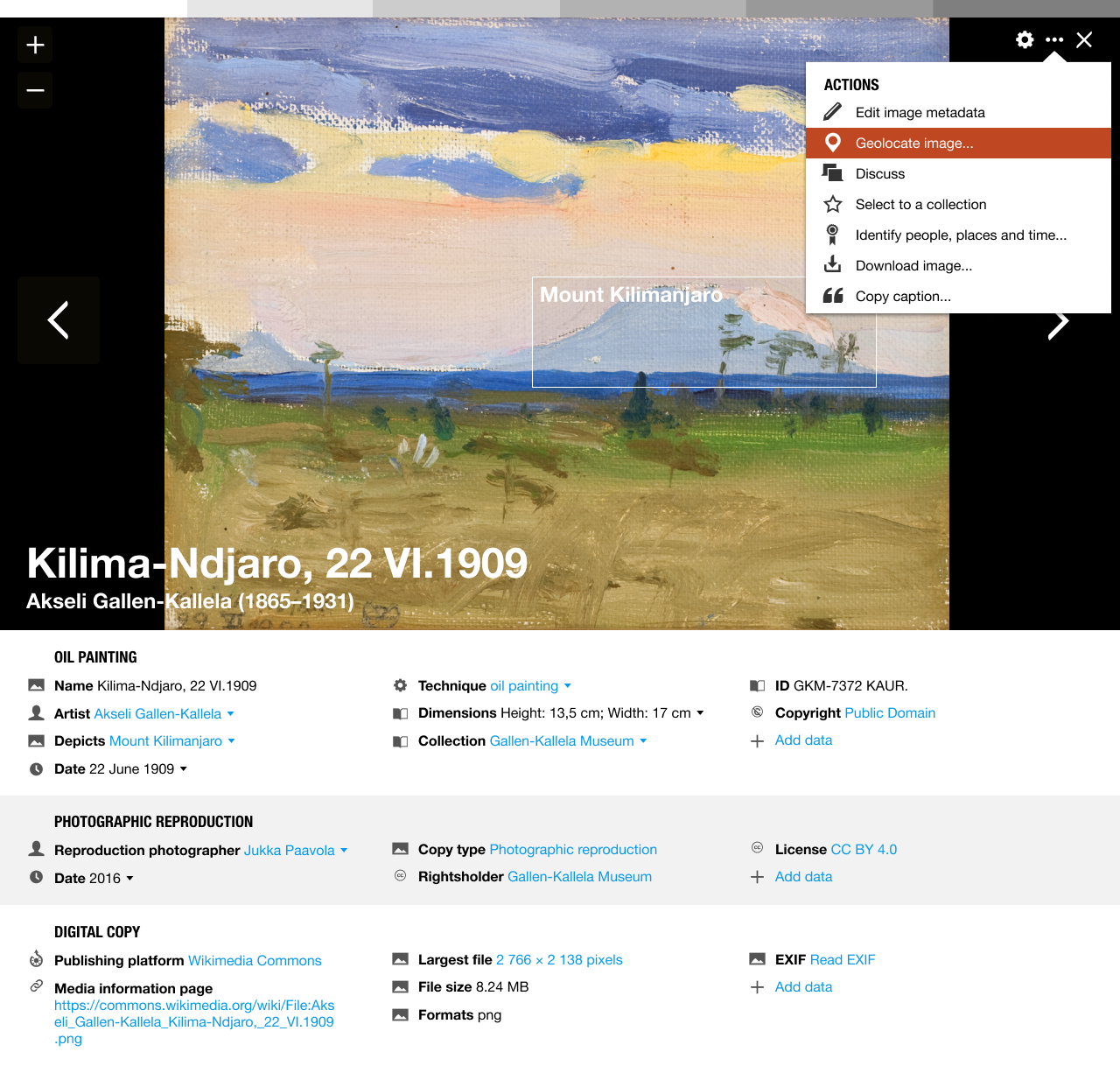 |
Viewing image metadata
Every image can be opened in a viewer window that also displays all metadata. The original metadata is mapped to Wikidocumentaries data properties, and therefore it is altered. If the metadata is not CC0, can the images with altered metadata be displayed?
|
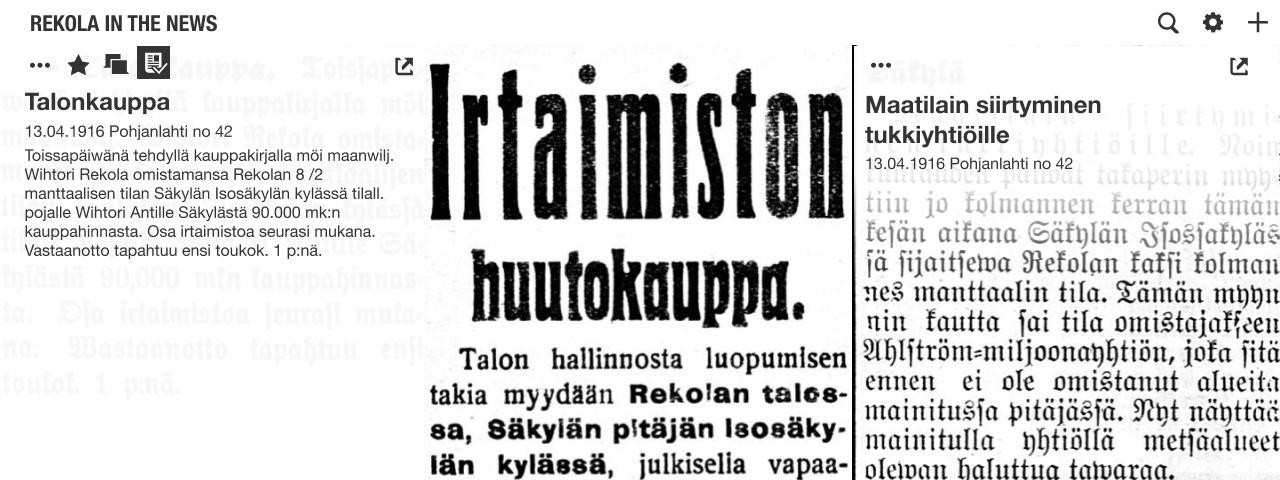 |
Search newspaper articles
The users will be able to search, clip and display newspaper articles related to the topic. The search result will be a collection of unaltered clippings. They are not adaptations. Later, it will also be possible to transcribe the clipped articles. The transcriptions are not adaptations either. |
Enriching metadata
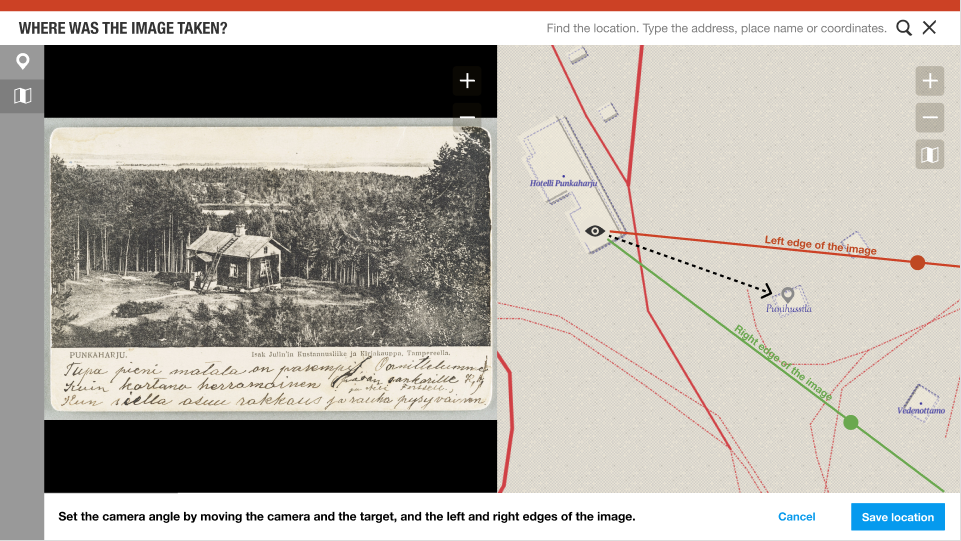 |
Adding or changing the location an image was shot in
Image locations can be specified with a geolocating tool that is based on the NYPL Space/Time Surveyor. The image remains unchanged, but the enriched data is created and saved in Wikidocumentaries. I assume this would constitute an adaptation of the metadata. If metadata is separately licensed (preferably with CC0), this is possible under ND. But if ND covers also metadata (is not separately licensed), I assume the work becomes an adaptation. I hope I'm wrong. |
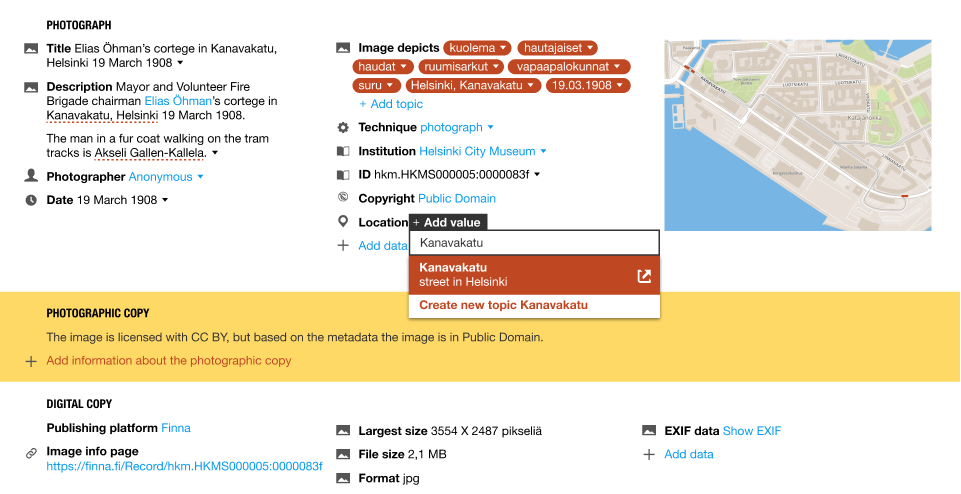 |
Editing and creating structured metadata
The metadata originating from the institutions can be turned into structured data. The images remain unchanged, but the metadata is transformed. It follows the same pattern as the above example. |
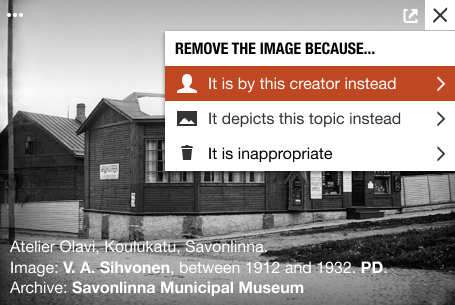 |
Curating images
Another way of enriching image metadata is by adding and removing them from collections. |
Creating new works based on other works
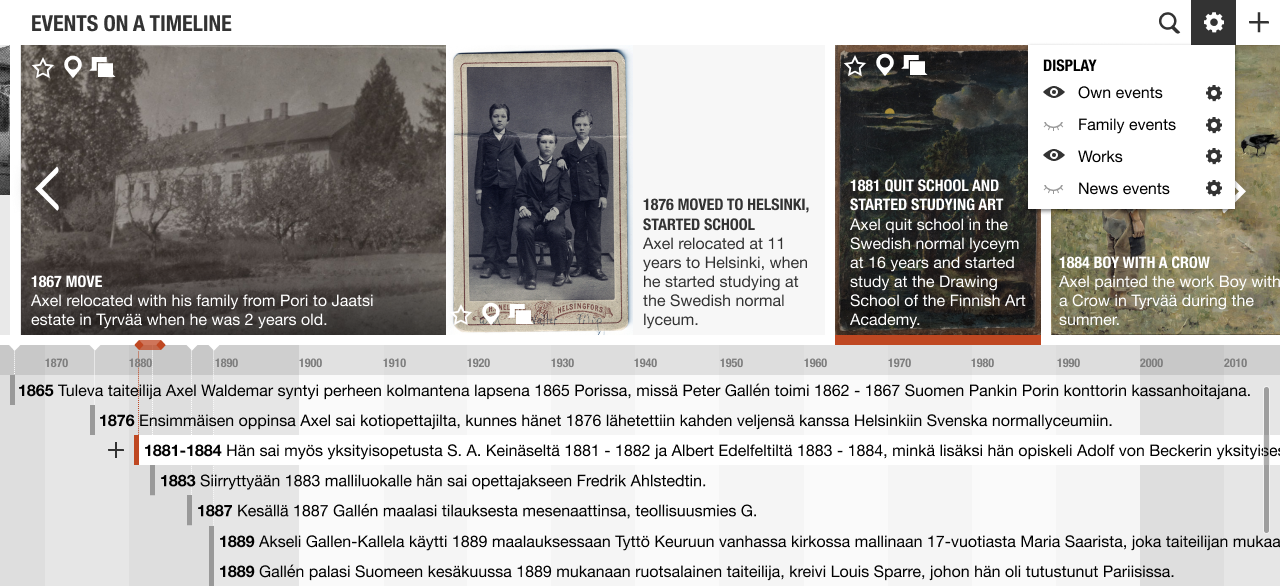 |
Saving a Wikidocumentaries search result display
Wikidocumentaries topic pages are composed of components that display data about the topic. One displays people related to the topic while another displays works depicting the topic. The components can be viewed in different ways: visual gallery and list views are currently available, timeline and map views will be created. The data and the resulting imagery in the components can be filtered, faceted and sorted. Data from different components can be displayed together on a map or a timeline or a combination of them. The configuration of these elements can be saved, and the resulting graphic can be exported. Currently, all data and images used in these components are from Wikimedia projects, which makes them unproblematic to create. What would be the situation be if more sources were added?
|
 |
Postcard scenario
This tool does not exist yet, but could be created. The user can pick any image and create a postcard of it by cropping the image, altering the colors, adding text and graphics on top. Graphic styles can imitate styles digitized from material shared on the platform.
|
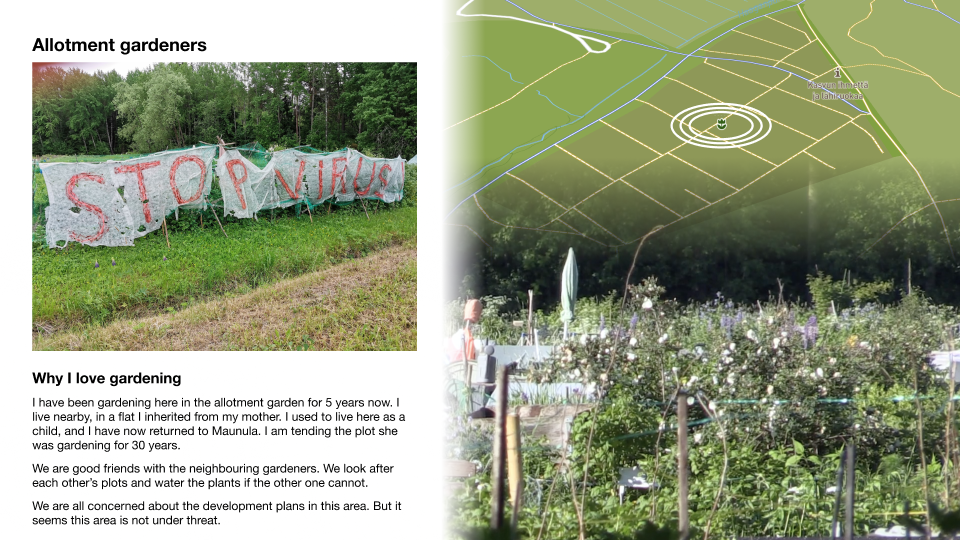 |
Mapstory
We are currently looking into experimenting with mapstories. They are narratives that combine still images, text, map views, audio and video. Each frame includes a combination of several mediatypes, and the frames can be arranged to different compositions: slideshow-like, webpage-like, or map-like and played automatically or by user interaction. The materials can be arranged on a timeline. Are the mapstories remixes or collections? My interpretation is that although most of the work could be considered a collection, it becomes an adaptation when media is arranged and synced on a timeline.
|
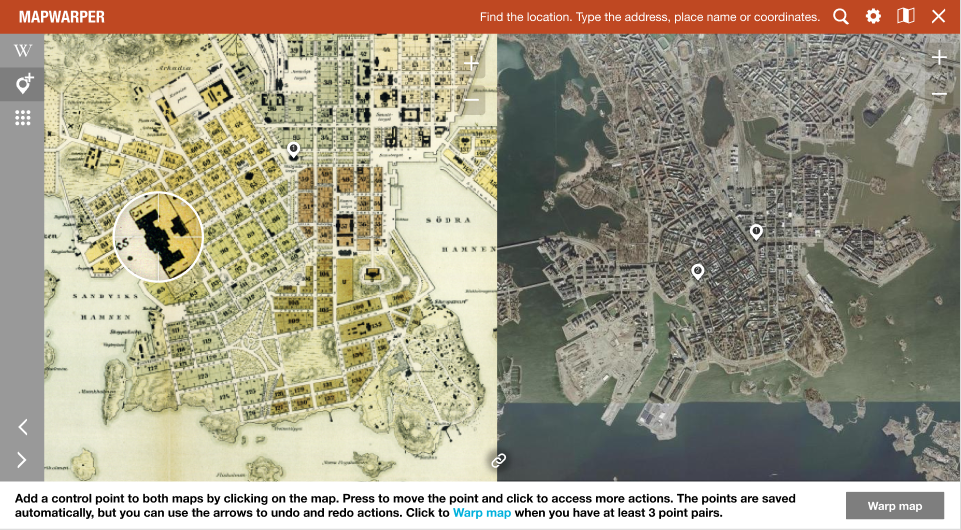 |
Rectifying maps
The user can pick any scanned map found via Wikidocumentaries and rectify it. The process produces a distorted map image that aligns with a digital world map and can be used as a layer on top of it. The resulting ground control points can be saved and used to distort the original map again, also in another environment.
|
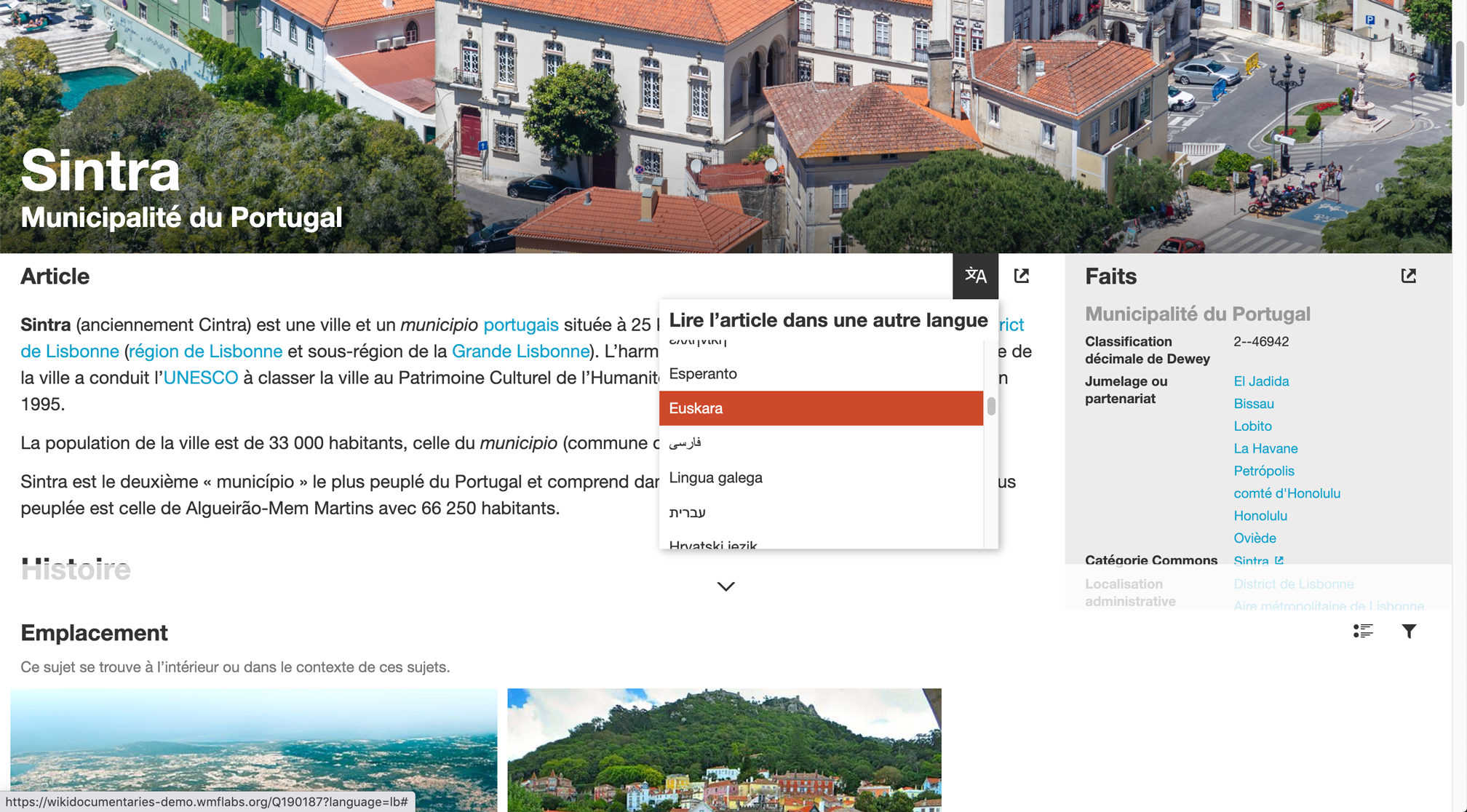 |
Translating articles
Currently all articles are from Wikipedia, but we want to allow writing articles in the local wiki as well. Wikipedia articles can be translated with Content Translation tool between any Wikipedia languages. This would be desirable for Wikidocumentaries articles as well. A precondition is that the articles are licensed permissively enough for that. |
Wikidocumentaries licensing
Wikidocumentaries itself is a collection that brings together content and tools. Each of the components has their own copyright status, and Wikidocumentaries service has its own. So do the user contributions on the site.
Wikidocumentaries service
Wikidocumentaries license is CC BY 4.0, which covers for example the layouts and the original texts.
User contributions
All user contributions that are considered data, will be licensed with CC0. Default license for remixes will be CC BY 4.0, but the user may also choose CC0.
Translations
The user interface translations are created in translatewiki.net and licensed CC BY 3.0.
Source code
The source code of the user interface is licensed with GNU General Public License.
Conclusions
- In order to ensure the compatibility of the source materials for remix, they should be uploaded to Wikimedia Commons before they can be remixed.
- There should be a similar normalizing process for user-contributed materials that fall outside the project scope of Wikimedia Commons.
- It would be useful to display media with restrictive licensing to a certain extent. It would help discovery of materials and give the opportunity to work with their rights holders to consider more open licenses. The media may also be falsely restricted or licensed, and displaying them would allow identifying that. Media with restricting licensing conditions could only be viewed, not remixed.
Attribution
See the About page for copyright information.
| About | Technology | Design | Content modules | Tool pages | Projects |
| Status
Wikidocumentaries Slack |
Setting up dev environment |
Components |
Active modules Module ideas |
Visual editor | Central Park Archives |
